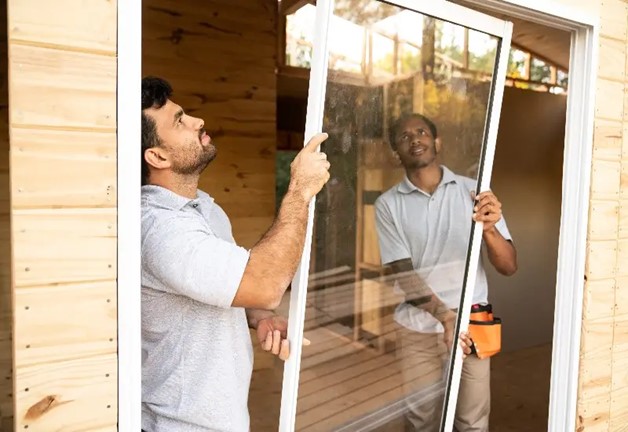
Budgeting for Window Replacement Costs
Replacing your windows is a smart way to improve home appearance, comfort, and efficiency. Still, the cost of replacement windows can vary widely, leaving homeowners wondering how to budget for this project. In this replacement window guide, you’ll learn what impacts pricing the most and tips to plan your budget.
What Affects Window Replacement Costs?
Typical home window replacement costs can vary. Here are the factors that affect wide-ranging estimates.
Frame Material
- Vinyl is the most affordable option. It’s also low-maintenance, energy-efficient, and durable, making it the go-to choice for many homeowners.
- Aluminum costs slightly more than vinyl but offers less insulation. It’s durable and lightweight, but not ideal for maximizing energy savings.
- Fiberglass is strong, energy-efficient, and weather-resistant. It usually costs more than vinyl or aluminum but provides excellent performance and longevity.
- Wood offers a classic appearance and excellent insulation, with a higher price tag than many other window materials. It also requires regular upkeep to prevent rotting and warping.
- Composite frames blend different materials to offer a wood-like appearance with superior strength and efficiency. These are among the most expensive options, often selected for high-end projects.
Window Style
- Picture windows are fixed in place and don’t open. Because of this, they’re the least expensive option.
- Single-hung windows are the most budget-friendly operating style. Only the bottom sash moves, which simplifies construction and lowers costs.
- Double-hung windows allow both the top and bottom sashes to move. They cost more than single-hung versions but offer versatile airflow and easier cleaning.
- Sliding windows move horizontally and usually have mid-range costs. They’re easy to operate and suit numerous home designs.
- Casement windows open outward with a crank. They’re more expensive than other styles due to the hardware involved.
Size and Quantity
The size of your windows and how many you need are obvious cost drivers. Larger windows require more materials, more labor, and sometimes structural changes. While replacing multiple windows at once may earn you a noticeable discount, the total cost increases with every additional window.
Glass Type
- Single-pane glass is the least expensive but does little to insulate your home.
- Double-pane glass has two layers with an insulating pocket of air in between. This is the standard choice for residential windows.
- Triple-pane glass offers the best insulation and noise reduction but comes at a higher price.
- Upgrades like Low-E coatings or gas in-fills improve energy efficiency but add to your upfront investment.
Labor
Window installation isn’t as simple as popping a new window into place. If your home requires structural adjustments or repairs, or the windows are on an upper floor, the installation costs increase. Hiring experienced professionals is crucial to prevent mistakes and ensure your new windows perform as expected, but you’ll pay more for skilled labor.
Request a Window Replacement Estimate
Ultimately, the best way to budget for your window replacement project is to get an accurate estimate from an experienced window installer. Ferris Home Improvements would be happy to help. We’ve been improving homes across Delaware, Pennsylvania, and Maryland since 2004. Our family-owned business has built our reputation on honesty, quality, and local expertise. Trust us to follow The Ferris Way, which means fair pricing, customizable solutions, and work we’re proud to stand behind. Schedule your free window replacement estimate today!
